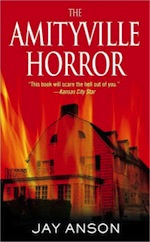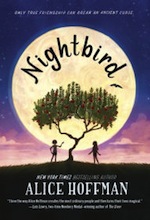If you’ve even been on the receiving end of a curse, it’s like you’re constantly being followed. Like, by a stray dog trotting behind you as you walk down the sidewalk, a little lost kid at a carnival who appears whenever you round the corner, or a relentless wasp determined to land on your patterned shirt. Or, it’s like having a cough so wet, wracking, and persistent that it makes you more than a little nervous. Or, it’s like worrying—all the time—that you’ve left the stove on or that the small clicking sound coming from your shoulder joint is indicative of a much larger, more sinister problem. Sometimes, if you’re lucky, you can find someone who can help you remove your curse, but those remedy-prayers don’t always work or can serve as just temporary fixes.
Curses are about power, and they’re about fear. You lose power when cursed, and you gain fear. The smallest things make you wonder, “Was that because of the curse?” Why can’t you stop losing weight despite stuffing your face? Why is your hair clumping more than normal in the bristles of your hairbrush? Why did your loving cat recoil from your gentle touch and bite your wrist? Like the most terrible type of fear, the fear of being cursed is not always huge and obvious. It can take the form of a slow, cold trickle in the back of your throat or a small, hard pebble in your depths of your stomach. You wonder, “What did I do to deserve this?” Sometimes the answer is just, “You were born.”
The Brief Wondrous Life of Oscar Wao by Junot Díaz (2007)
 “Because no matter what you believe, fukú believes in you.” The opening pages of Díaz’s novel are dedicated to explaining the curse that perpetually plagues the Wao family. This particular curse, otherwise known as fukú, apparently originated in Africa and traveled across the Atlantic to sink its fangs into the modern-day Dominican Republic. It’s tied to ancient history and a more recent bad man, and it’s carried through generations (sorry, Oscar). It’s inescapable, rears its head during all stages of Oscar’s short life, causing him all manner of personal turmoil, and can certainly be tied to his eventual demise.
“Because no matter what you believe, fukú believes in you.” The opening pages of Díaz’s novel are dedicated to explaining the curse that perpetually plagues the Wao family. This particular curse, otherwise known as fukú, apparently originated in Africa and traveled across the Atlantic to sink its fangs into the modern-day Dominican Republic. It’s tied to ancient history and a more recent bad man, and it’s carried through generations (sorry, Oscar). It’s inescapable, rears its head during all stages of Oscar’s short life, causing him all manner of personal turmoil, and can certainly be tied to his eventual demise.
The Amityville Horror by Jay Anson (1977)
 Supposedly chronicling the “true” story of a cursed house, The Amityville Horror is the account of the eerie and awful occurrences that take place after the Lutz family moves into the house in which Ronald DeFeo Jr. murdered six people. In this book, the Lutz family isn’t the thing that’s cursed, not really, not at the beginning, anyway. What becomes apparent is that the horror and pain of the mass murder has seeped into the walls and has caused the house itself to become cursed. That curse then gets transferred onto or into its inhabitants, who are first discomfited, then terrified, then, finally, driven away.
Supposedly chronicling the “true” story of a cursed house, The Amityville Horror is the account of the eerie and awful occurrences that take place after the Lutz family moves into the house in which Ronald DeFeo Jr. murdered six people. In this book, the Lutz family isn’t the thing that’s cursed, not really, not at the beginning, anyway. What becomes apparent is that the horror and pain of the mass murder has seeped into the walls and has caused the house itself to become cursed. That curse then gets transferred onto or into its inhabitants, who are first discomfited, then terrified, then, finally, driven away.
Nightbird by Alice Hoffman (2015)
 Centuries ago, the Witch of Sidwell cursed the Fowler family, so now every Fowler son is born with wings. Nightbird is a middle grade offering from Hoffman that tells the story of a young Fowler girl, Twig, and what happens when the descendants of the Witch of Sidwell move into a cottage near her family home and Twig attempts to undo her brother’s curse.
Centuries ago, the Witch of Sidwell cursed the Fowler family, so now every Fowler son is born with wings. Nightbird is a middle grade offering from Hoffman that tells the story of a young Fowler girl, Twig, and what happens when the descendants of the Witch of Sidwell move into a cottage near her family home and Twig attempts to undo her brother’s curse.
Dracula by Bram Stoker (1897)
 Dracula himself is cursed with eternal life, but that curse perpetuates in that, in order to survive, Dracula must spread his curse to others, through blood. Dracula is a particular threat because he is a shape-shifter: he can be a young man, an old man, a bat, a wolf, the mist. One interpretation of Stoker’s story is that it’s about xenophobia, specifically in how Dracula could represent the Irish population that was dispersing itself throughout London during the late nineteenth century, the time during which this novel was written. In essence, the Irish were thought to be “tainting” or “cursing” what were once thought to be “pure” bloodlines.
Dracula himself is cursed with eternal life, but that curse perpetuates in that, in order to survive, Dracula must spread his curse to others, through blood. Dracula is a particular threat because he is a shape-shifter: he can be a young man, an old man, a bat, a wolf, the mist. One interpretation of Stoker’s story is that it’s about xenophobia, specifically in how Dracula could represent the Irish population that was dispersing itself throughout London during the late nineteenth century, the time during which this novel was written. In essence, the Irish were thought to be “tainting” or “cursing” what were once thought to be “pure” bloodlines.
One Hundred Years of Solitude by Gabriel García Márquez (1967)
 Like Oscar Wao, this is another novel that features a generational curse, though the source of the curse can be specifically pin-pointed. Early in the story, one of the characters (Ursula’s mother) warns that a baby born from incest will have the tail of a pig. As the family enters the modern era (or, as the modern era encroaches upon the family), the family morally deteriorates until finally, the prophecy is fulfilled, leaving the pig-tailed baby to be abandoned and eventually eaten by ants. The generational curse is then broken because the family itself is broken.
Like Oscar Wao, this is another novel that features a generational curse, though the source of the curse can be specifically pin-pointed. Early in the story, one of the characters (Ursula’s mother) warns that a baby born from incest will have the tail of a pig. As the family enters the modern era (or, as the modern era encroaches upon the family), the family morally deteriorates until finally, the prophecy is fulfilled, leaving the pig-tailed baby to be abandoned and eventually eaten by ants. The generational curse is then broken because the family itself is broken.
Top image from The Amityville Horror (1979)
 Samantha Mabry is the author of the young adult novel A Fierce and Subtle Poison (Algonquin Young Readers), which is a re-imagining of Nathaniel Hawthorne’s short story “Rappaccini’s Daughter” set in San Juan, Puerto Rico. In her novel, there are curses, a girl full of poison, hurricanes, and the ghost of a dead nun. In addition to writing, Samantha teaches English composition and Latino/a Literature at a community college in Dallas, where she lives with her husband, an historian, and their pets, including a cat named Mouse.
Samantha Mabry is the author of the young adult novel A Fierce and Subtle Poison (Algonquin Young Readers), which is a re-imagining of Nathaniel Hawthorne’s short story “Rappaccini’s Daughter” set in San Juan, Puerto Rico. In her novel, there are curses, a girl full of poison, hurricanes, and the ghost of a dead nun. In addition to writing, Samantha teaches English composition and Latino/a Literature at a community college in Dallas, where she lives with her husband, an historian, and their pets, including a cat named Mouse.










